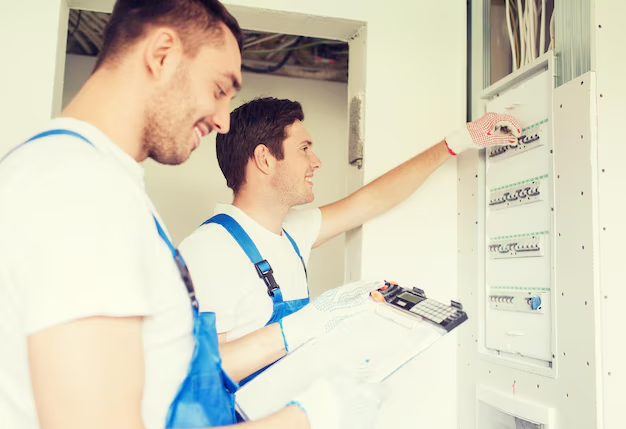Master the Art of Wiring a Generator Transfer Switch: Your Comprehensive Guide
Imagine you've settled down for a relaxing evening when, without warning, the power goes out. Whether it's due to a storm or a grid failure, sudden blackouts can be frustrating and inconvenient. That's where a generator transfer switch comes into play, seamlessly shifting your electrical load from the grid to your generator, ensuring that your essential appliances keep running. Mastering how to wire a generator transfer switch can be a game-changer, offering peace of mind and continuous comfort, even when the lights go out.
Why Install a Generator Transfer Switch?
Safety First: Attempting to connect a generator directly to your home using extensions can be perilous. It poses the risk of back-feeding electricity, endangering utility workers and damaging appliances. A transfer switch eliminates this danger by managing power distribution in a controlled and secure manner.
Convenience & Efficiency: With a wired transfer switch, you can prioritize and manage the power sent to critical circuits, such as heating, refrigeration, and lighting, all by flipping a few switches.
Choosing the Right Transfer Switch
Before you begin, it's vital to select the appropriate transfer switch for your home. Here are some considerations:
Manual vs. Automatic: Decide between a manual transfer switch, which requires you to toggle between power sources, and an automatic option that switches when it senses a power disruption.
Amp Rating: Your main service panel's amp rating will determine this. Most residential homes require a 30-amp to 50-amp switch.
Circuit Management: Consider how many circuits you need to run. Transfer switches come in models supporting anywhere from 4 to 10 circuits.
Essential Tools and Materials
Before starting, gather the following tools and materials for a smooth installation process:
- Drill and drill bits
- Voltage tester
- Screwdrivers (flathead and Phillips)
- Wire stripper/cutter
- Conduit (flexible and non-metallic)
- Conduit connectors
- Power inlet box
- Transfer switch kit
- Electrical tape and wire nuts
Step-by-Step Guide to Wiring a Generator Transfer Switch
Preparation and Planning
Inspect Your System
- Understand Your Setup: Inspect your electrical panel to familiarize yourself with its layout and structure.
- Locate Circuits: Identify the essential circuits you'll connect to the transfer switch.
Safety First!
- 👷 Turn Off the Power: Disconnect the power at the main breaker before working on your electrical system.
- ⚡ Testing: Use a voltage tester on the circuits and panel to ensure they're de-energized.
Installing the Transfer Switch
Mount the Transfer Switch
- Choose a Location: Position it near your main service panel. Ensure it's accessible and has adequate ventilation.
- Secure the Switch: Install the unit with screws, using a drill for a solid attachment.
Connect to the Main Panel
- Insert Conduit: Use a knockout hole on the main panel's side to feed a flexible conduit between the panel and the transfer switch.
- Wire Colors: Typically, use black and red wires for hot, white for neutral, and green for ground.
Connecting Circuits
Wiring Transfer Switch
- Strip the Wires: Utilize your wire stripper/cutter to expose about 3/4 inch of each wire intended for connections.
- Attach Circuit Wires: Connect the outgoing wires from the transfer switch to the main panel's positions, ensuring secure connections with wire nuts and electrical tape.
Connect Generator Cord
- Install Power Inlet Box: On the outside wall, connect the conduit leading from the generator input to the inlet box.
- Wire the Inlet Plug: Connect generator cord wires (black, red, white, green) to the corresponding terminals inside the inlet box, securing them tightly.
Testing the Installation
- Restore Power: Switch the main breaker back on and then test each transfer switch circuit to verify functionality.
- Conduct a Dry Run: Simulate a power outage, plug in your generator, and switch over circuits to confirm all systems run smoothly.
Maintaining Your Transfer Switch
Regular maintenance can prolong the life of your transfer switch and ensure it functions flawlessly when needed:
- Scheduled Inspection: Monthly checks for loose connections or wear.
- Generator Run: Periodically start your generator to exercise the transfer switch and generator system.
- Professional Assessment: Annually have a licensed electrician review your setup for any needed adjustments.
Key Takeaways for Wiring a Transfer Switch 🔑
- Safety is paramount; never work on live circuits.
- Choose a transfer switch that matches your home's power needs.
- Regular maintenance is essential for optimal performance.
- Always refer to the specific wiring diagrams for your transfer switch model.
Handy Summary for Quick Reference 😃
- 🔧 Preparation: Gather tools and understand your electrical system.
- 📍 Location: Install the switch near the main panel for easy access.
- ⚡ Connection: Securely wire circuits and test for functionality.
- 🗓️ Maintenance: Routine checks ensure efficient operation.
In mastering how to wire a generator transfer switch, you've not only enhanced your home's resilience against power outages but also empowered yourself with valuable DIY skills. With safety, convenience, and peace of mind rolled into one, a well-wired transfer switch is not just a practical addition; it's a solid investment in your home's preparedness. So, the next time the power flickers off, you're confidently in control.

Related Topics
- How Can I Transfer Data From One Laptop To Another
- How Can I Transfer Domain To Godaddy
- How Can I Transfer My Calls To Another Phone
- How Can I Transfer Pdf To Word
- How Can We Transfer Data From One Laptop To Another
- How Can You Transfer Data From One Phone To Another
- How Can You Transfer Emails From One Account To Another
- How Can You Transfer Vhs Tapes To Dvd
- How Do I Transfer a Prescription From Walgreens To Cvs
- How Do I Transfer Data From Ipad To Ipad